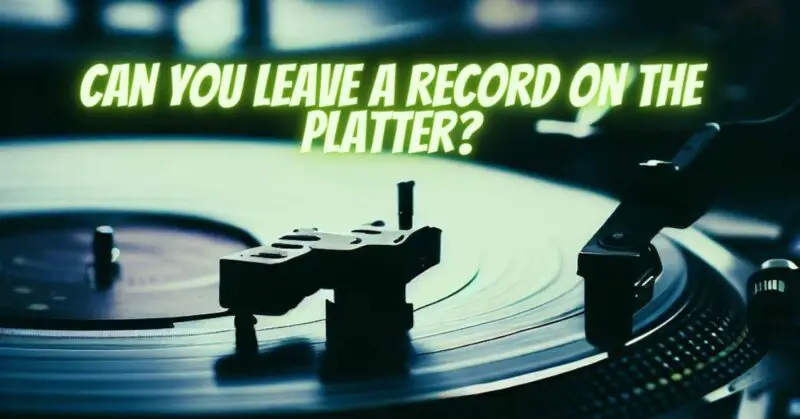Vinyl records have made a remarkable comeback in recent years, captivating both seasoned audiophiles and new music enthusiasts. As collectors and music lovers enjoy the immersive analog experience of vinyl playback, questions arise about the best practices for handling and storing records. One common query is whether it’s safe to leave a record on the turntable platter after listening. In this article, we will explore the potential effects of leaving a record on the turntable and provide guidelines for proper record handling and storage.
Immediate After-Play Considerations
Leaving a record on the turntable platter immediately after play is generally considered acceptable, especially if you intend to listen to the same album again soon. During this short duration, the record remains stationary on the platter, and the stylus is not in contact with the grooves, reducing the risk of damage.
However, there are still some precautions to keep in mind:
- Stylus Position: If you plan to leave the record on the platter, it’s essential to lift the tonearm and return it to its resting position (the tonearm rest). This prevents the stylus from inadvertently touching the grooves while the turntable is not in use, avoiding potential damage to both the stylus and the record.
- Dust Cover: If your turntable has a dust cover, remember to close it when the record is on the platter. The dust cover provides protection from dust and contaminants that could settle on the vinyl surface.
Extended Storage on the Turntable
Leaving a record on the turntable for extended periods, such as days or weeks, is not advisable. Prolonged exposure to the environment can lead to various issues:
- Dust Accumulation: Vinyl records are prone to attracting dust and airborne particles. Leaving a record exposed on the turntable for an extended period increases the chances of dust settling on the surface and in the grooves, potentially affecting sound quality and causing audible pops and crackles during playback.
- Warping: Vinyl records are sensitive to temperature changes. Leaving a record on the turntable under direct sunlight or in a warm environment can lead to warping, distorting the vinyl’s shape and affecting playback.
- Environmental Factors: Extended exposure to light, heat, and humidity can degrade the vinyl’s physical integrity and affect the sound quality.
Proper Record Storage
To maintain the quality and longevity of your vinyl records, it’s crucial to adopt proper storage practices. When you’re done listening to a record, consider the following steps:
- Remove the Record: After each play, remove the record from the turntable platter and return it to its inner sleeve and outer jacket.
- Inner Sleeves: Invest in anti-static inner sleeves or poly-lined paper sleeves to protect the vinyl from dust and reduce static buildup.
- Outer Jackets: Store records vertically in their outer jackets to prevent ring wear and minimize exposure to dust and environmental factors.
- Dust Cover: Close the turntable’s dust cover when not in use to protect the platter and stylus from dust and contaminants.
Leaving a record on the turntable platter immediately after play is generally safe for short durations, as long as the stylus is properly positioned and the dust cover is closed. However, for extended periods, it’s best to remove the record from the turntable and store it properly in its inner sleeve and outer jacket. Adopting good record storage practices helps preserve the vinyl’s sound quality and physical condition, allowing you to enjoy your vinyl collection for years to come.


